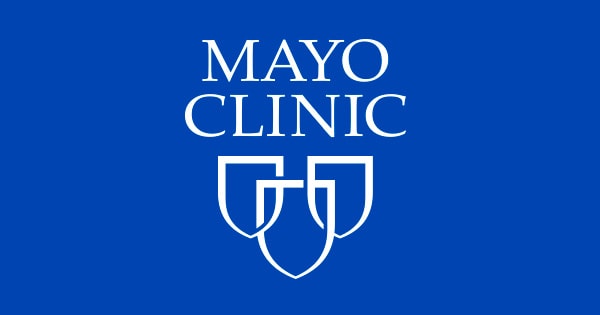— How our healthcare system is financed is a central part of the problem
by N. Adam Brown, MD, MBA March 20, 2023
The number of unfilled emergency medicine (EM) residency positions in this year’s initial Match hit a record: 555. In 2022, there were 219 unmatched positions. Most observers considered last year’s number, which was also unprecedented at the time, part of a pandemic hangover.
They were wrong.
What was once a highly sought after specialty is now not. U.S. medical students applying to accredited EM residencies declined 16.8% from 2021 to 2022. In 2023, EM applicants fell another 18.1%. As a board-certified, practicing EM physician, these statistics alarm me.
By the end of Match Week last week, many positions were likely filled, but how did we get here?
The American College of Emergency Physicians (ACEP) is convening a task force to better understand what is happening, but the contributing factors should not come as a surprise to the National Resident Matching Program (NRMP) task force. Emergency physicians are burnt out, paperwork and workload burdens are high and rising, and there is little autonomy.
What medical student would want to enter EM residency right now — especially knowing they may not have a job when they leave residency? (Even with high unmatched numbers, the country is expected to have a surplus of up to 8,000 EM doctors by 2030.) And if they get a job, would their salary be secure? Medical students leave school with a median average of $200,000 to $215,000 in debt. They know they must pay off those loans.
All these factors decrease the desirability of the specialty, but they don’t tell the whole story. There is a more foundational cause to the burnout, high workload, and EM physician surplus. It’s how our current healthcare system is financed.
Over the past few years, hospitals and physicians have seen a continuous real or functional decline in reimbursement rates, even from government programs like Medicare. Just this year the Centers for Medicare & Medicaid Services cut rates for emergency physicians, and the agency expects to make future cuts too.
Private payers also have continually negotiated lower rates or forced physician groups to go out of network, triggering arbitration. (These skirmishes are happening at a time when insurance providers are making unprecedented profits. United Healthcare made more than $20 billion in profit in 2022 while more than half of hospitals ended that same year in the red and many physician groups are on the brink.)
Add to that inflation, and the math to maintain current salaries for an EM doc and profitability for physician groups becomes more challenging.
To maintain profitability and salaries, provider groups and hospitals have attempted to mitigate costs by adding advanced practice providers, or APPs (a move that has been sanctioned by state licensing boards and legislatures), reducing scribe coverage, forcing productive models, and cutting coverage at facilities.
In addition to these cost mitigation strategies, hospital systems have implemented other short- and long-term strategies to improve the bottom line. That is where adding residency programs has led to a surplus in EM physicians.
In the short-term, health systems are adding residents to the staffing mix because they are cheaper than “attending” physicians. With an average salary of just over $60,000 a year, residents are more affordable than even APPs, and, remember, residents are legally able to work 80 hours a week. (There are restrictions on residents’ scope of practice and reimbursement disparities between residents and attendings, like those with APPs.) However, as residents gain maturity and autonomy, they serve a greater unit of production — evaluating patients, performing procedures, writing notes, speaking with families, and ordering medications (to name a few) all under the watchful eye of an attending physician. That too reduces costs. Some hospitals are also paid by Medicare and Medicaid to have residents (around $130,000/year per resident).
For hospitals, that infusion of capital plus lower-cost, highly skilled workers is a win-win.
In the longer term, as more EM residents finish training, the supply increases. If they stay local, which many do, recruiting is cheaper. (That generates significant savings, given that the estimated cost of hiring one physician is over $250,000 or more.) With more residents and an increased number of APPs, the need for a board-certified EM physician declines. The surplus of emergency physicians may result in declining salaries.
These financial mitigation tactics, on their own and certainly combined, have taken a psychological and physical toll on EM docs. Medical students see that.
Residents do support both the hospital’s bottom-line and their patients, and society needs them. But we must ask: are the financial incentives to create programs greater than the controls to ensure appropriately matched supply-and-demand?
To be clear, I am not advocating we remove cost concerns from the equation. (Investors and hospitals are doing what a society based on capitalism expects them to do: make a profit.) But our system is not purely capitalistic. The government creates regulations, policies, tax-incentives, and guardrails (like anti-trust laws) that direct and incentivize the flow of dollars. Currently, the government is coronating winners and losers. And right now, the losers are clear: providers and patients.
We need some re-shaping.
Aligning incentives and changing policies in healthcare could mitigate the flight of medical students from EM or other safety-net specialties like primary care. Policymakers should:
- Create guardrails around residency expansion in specialties demonstrating surplus
- Increase reimbursement for safety-net specialties (like EM and primary care)
- Reform the No Surprises Act, which currently gives significant advantages to payers
- Create loan repayment incentives for college and medical students to enter safety-net specialties
- Accelerate the transition to value-based care
- Hold hospitals accountable for physician wellness with objective data
Despite the near-ubiquitous recognition that our healthcare system is flawed, few want or are willing to propose a dramatic overhaul of the system. But we do need changes.
As we begin to dissect the reasons why EM has shifted from a desirable to a less-attractive field, we must recognize the role financial incentives play, especially if we want different outcomes. Otherwise, future generations will have a harder time finding emergency physicians or primary care physicians when they need one.
N. Adam Brown, MD, MBA, is a practicing emergency medicine physician, founder of ABIG Healthand a professor of practice at the University of North Carolina’s Kenan-Flagler Business School.
Note: This article have been indexed to our site. We do not claim legitimacy, ownership or copyright of any of the content above. To see the article at original source Click Here













